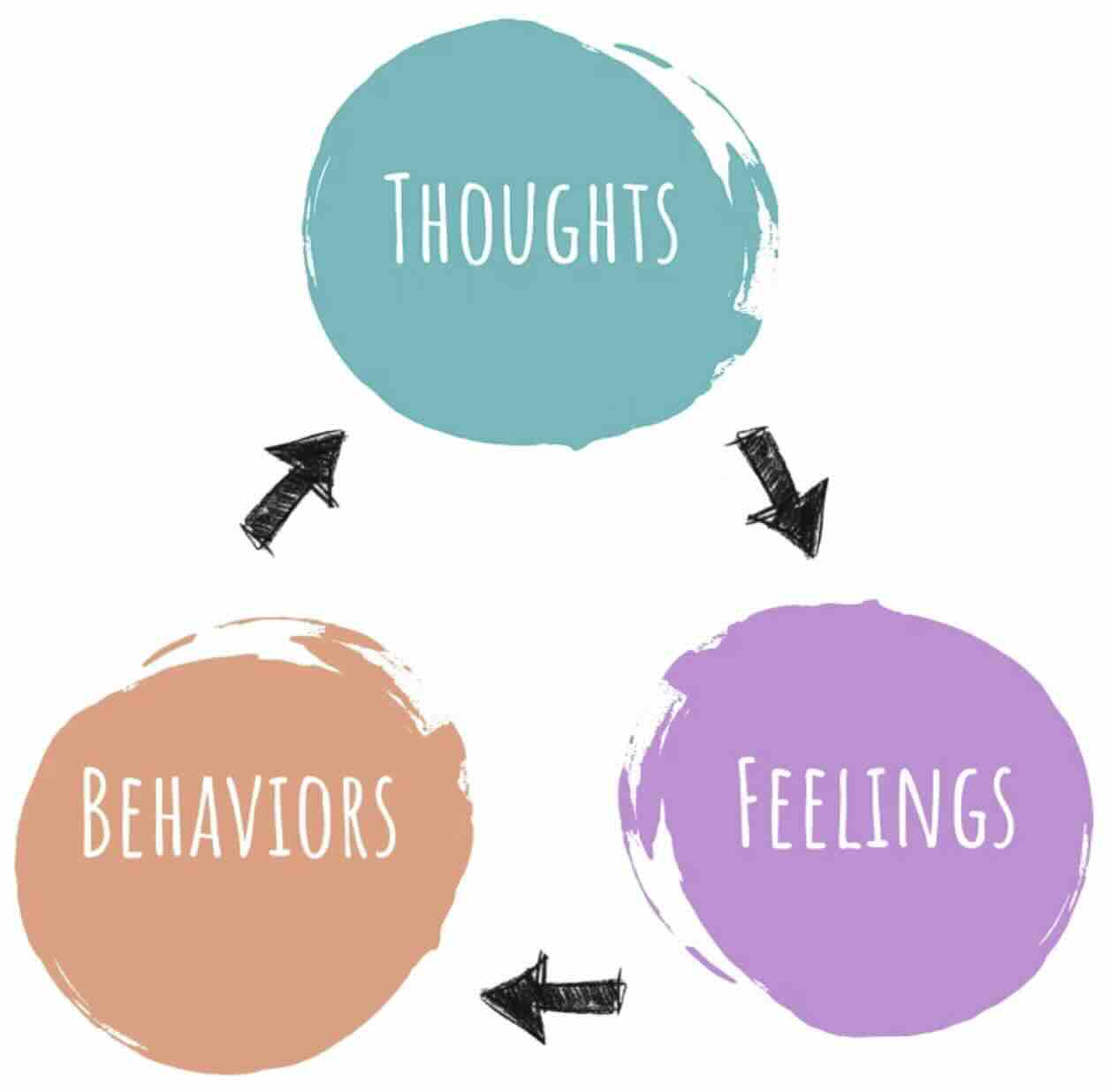Cognitive Behavioral Therapy (CBT)
Cognitive Behavioral Therapy (CBT) is a widely used, evidence-based type of psychotherapy that focuses on identifying and modifying maladaptive thoughts, emotions, and behaviors (Beck, 1976). It is based on the premise that our thoughts (cognitions), feelings, and behaviors are interconnected, and that changing negative thought patterns can lead to improvements in emotional and behavioral functioning (Beck, 2011).
The core principles of CBT include:
- Cognitive Model of Emotional Disorders: CBT is grounded in the idea that dysfunctional thinking contributes to emotional and behavioral disturbances (Beck, 1976).
- Cognitive Restructuring: Maladaptive thoughts are identified and replaced with more rational, balanced ones through a process called cognitive restructuring (Ellis, 1962).
- Behavioral Activation: Since avoidance and inactivity contribute to emotional distress, CBT encourages engagement in positive activities to improve mood and motivation (Jacobson et al., 2001).
- Exposure Therapy: Used for anxiety disorders, exposure therapy helps individuals face their fears gradually to reduce avoidance behaviors (Foa & Kozak, 1986).
- CBT teaches patients practical skills such as problem-solving, relaxation techniques, assertiveness, and emotion regulation (Meichenbaum, 1977).
CBT therapy is based on a collaborative and goal-oriented approach, therapy is well structured and time-limited, where both therapist and client work together to set and achieve specific and well delineated goals (Beck, 2011). CBT therapy is very active, with frequent homework assignments, such as thought records and behavioral experiments, that are commonly used to reinforce learning in-between sessions.

Effectiveness and Applications
CBT is also shown to produce long-lasting results, especially when individuals learn and consistently apply skills developed during therapy. It is often a preferred choice due to its structured, goal-oriented, and time-limited nature. Numerous studies have demonstrated CBT’s effectiveness in treating depression and Anxiety Disorders (including GAD, panic disorder, and social anxiety), Post-Traumatic Stress Disorder (PTSD), Obsessive-Compulsive Disorder (OCD), Eating Disorders, Substance Use Disorders, Sleep Disorders (e.g., insomnia), and Chronic Pain and Stress-related conditions. CBT is highly adaptable and can be tailored to the unique needs, goals, and cultural context of each individual.
Systemic family therapy (SFT)
Systemic therapy has its roots in family therapy, originally based on the General Systems Theory proposed by the Austrian biologist and philosopher Ludwig Von Bertalanffy in 1968. This method approaches problems practically rather than analytically and lays the focus on relationships, since individuals are interconnected and changes in one part of a “system” can affect the dynamic of the rest (Nichols, 2020). Unlike the psychoanalytic approach, which puts its focus in the past and the origin of the present difficulties, SFT does not attempt to determine the original cause of the problem, nor does it assign a diagnosis. The systemic approach seeks instead to identify patterns of behavior and address those patterns directly, to increase the awareness of the persons own capacity to relate differently, to see life from a more positive perspective and to more confidently explore alternative ways of behavior.
The core principles of SFT include:
- The systemic Perspective – Family members influence one another in reciprocal ways, meaning individual behavior cannot be fully understood in isolation (Minuchin, 1974).
- Circular Causality – Unlike linear causality (cause and effect), SFT emphasizes how behaviors and emotions circulate within a system, reinforcing certain patterns (Bateson, 1972).
- Communication Patterns – Dysfunctional communication within families can contribute to psychological distress (Watzlawick, Beavin, & Jackson, 1967).
- Homeostasis and Change – Families maintain stability (homeostasis), but therapy seeks to introduce change that disrupts maladaptive patterns and fosters healthier interactions (Haley, 1976).
Effectiveness and Applications
SFT has been widely used to treat various psychological issues, including marital distress, adolescent behavioral problems, eating disorders, and schizophrenia (Carr, 2019). Research has shown that systemic interventions improve family dynamics and lead to long-term benefits in individual mental health (Stratton, 2016).
References
- Bateson, G. (1972). Steps to an Ecology of Mind. University of Chicago Press.
- Beck, A. T. (1976). Cognitive Therapy and the Emotional Disorders. International Universities Press.
- Beck, J. S. (2011). Cognitive Behavior Therapy: Basics and Beyond (2nd ed.). Guilford Press.
- Ellis, A. (1962). Reason and Emotion in Psychotherapy. Lyle Stuart.
- Foa, E. B., & Kozak, M. J. (1986). Emotional Processing of Fear: Exposure to Corrective Information. Psychological Bulletin, 99(1), 20–35.
- Haley, J. (1976). Problem-Solving Therapy. Jossey-Bass.
- Hofmann, S. G., Asnaani, A., Vonk, I. J., Sawyer, A. T., & Fang, A. (2012). The Efficacy of Cognitive Behavioral Therapy: A Review of Meta-analyses. Cognitive Therapy and Research, 36, 427–440.
- Jacobson, N. S., Martell, C. R., & Dimidjian, S. (2001). Behavioral Activation Treatment for Depression: Returning to Contextual Roots. Clinical Psychology: Science and Practice, 8(3), 255–270.
- Meichenbaum, D. (1977). Cognitive-Behavior Modification: An Integrative Approach. Springer.
- Minuchin, S. (1974). Families and Family Therapy. Harvard University Press.
- Nichols, M. P. (2020). Family Therapy: Concepts and Methods (12th ed.). Pearson.
- Stratton, P. (2016). The Evidence Base of Systemic Family Therapy. Association for Family Therapy.
- Von Bertalanffy, L. (1968). Organismic Psychology and Systems Theory, Clark University Press.
- Watzlawick, P., Beavin, J. H., & Jackson, D. D. (1967). Pragmatics of Human Communication. Norton.